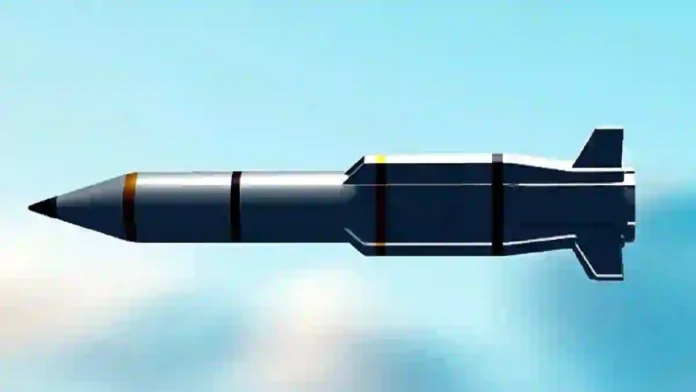The STAR (Supersonic Target) missile is an indigenously developed supersonic target system designed to simulate modern anti-ship and cruise missile threats with speeds exceeding Mach 2.5 (over 850 m/s).
It mimics enemy missile attack profiles, flying at altitudes from just 100 meters up to 10 kilometres, ranging operational distances from 55 to 175 kilometres and flight durations between 50 and 200 seconds. This realism is crucial for training India’s Navy and Air Force in live interception techniques against agile, fast-moving supersonic missiles.
Crafted as a “sparring partner” for the armed forces, STAR executes sharp manoeuvres and sea-skimming trajectories as low as 12 feet above waves, replicating complex scenarios including high-altitude dives from over 30,000 feet. This extensive flight envelope challenges defence operators’ tracking and engagement systems under realistic combat pressure, elevating operational readiness.
Built on advanced indigenously mastered liquid fuel ramjet propulsion, STAR uses a two-stage system: a booster rocket for initial acceleration, followed by a Liquid Fuel Ramjet (LFRJ) engine.
This enables extended range and endurance compared to traditional solid rocket motors, and marks a technological breakthrough for India, aligning with propulsion tech used in the Astra Mk3 air-to-air missile program. The ramjet technology also sets the foundation for future supersonic weapons.
The missile’s modular design supports two principal variants: an air-launched version for fighter aircraft such as TEJAS to enable air-to-air and air-to-ground combat training (including anti-radiation and anti-AWACS roles), and a ground-launched variant equipped with booster stages for deployment from vehicles or static platforms.
The latter allows flexible training across rugged or remote areas without costly infrastructure. These dual variants enable STAR to span multiple tactical and strategic mission profiles across the Indian Army, Navy, and Air Force.
By replacing costly imported target systems and simulations, STAR exemplifies India’s push for self-reliance under Atmanirbhar Bharat, providing an affordable, reusable training system for crucial supersonic threat countermeasures. Its deployment will reduce foreign dependency, enhance indigenous production capabilities, and lay the groundwork for advanced missile technologies.
DRDO has advanced STAR to Phase-III development, with ongoing full-system integration, subsystem validation, and extensive flight trials under simulated combat environments. Limited production is expected soon to support user training and continued system refinement.
Beyond training, STAR’s technological base may evolve into a real defensive weapon capable of strike missions against enemy radar and surveillance platforms. This dual-use capability maximises strategic value, providing India a cutting-edge, cost-effective solution for both live training and operational requirements. STAR matches or surpasses key performance aspects of existing supersonic systems like BrahMos in speed and agility, while being highly adaptable and economical.
The STAR missile project symbolises India’s growing missile mastery and defence technological confidence. It enables superior, realistic supersonic threat simulations at reduced cost, fortifies tri-service combat preparedness, and strengthens strategic autonomy. STAR’s imminent operational deployment marks a new era in indigenous targeted training and missile development that elevates Indian defence readiness to global standards.
Agencies




